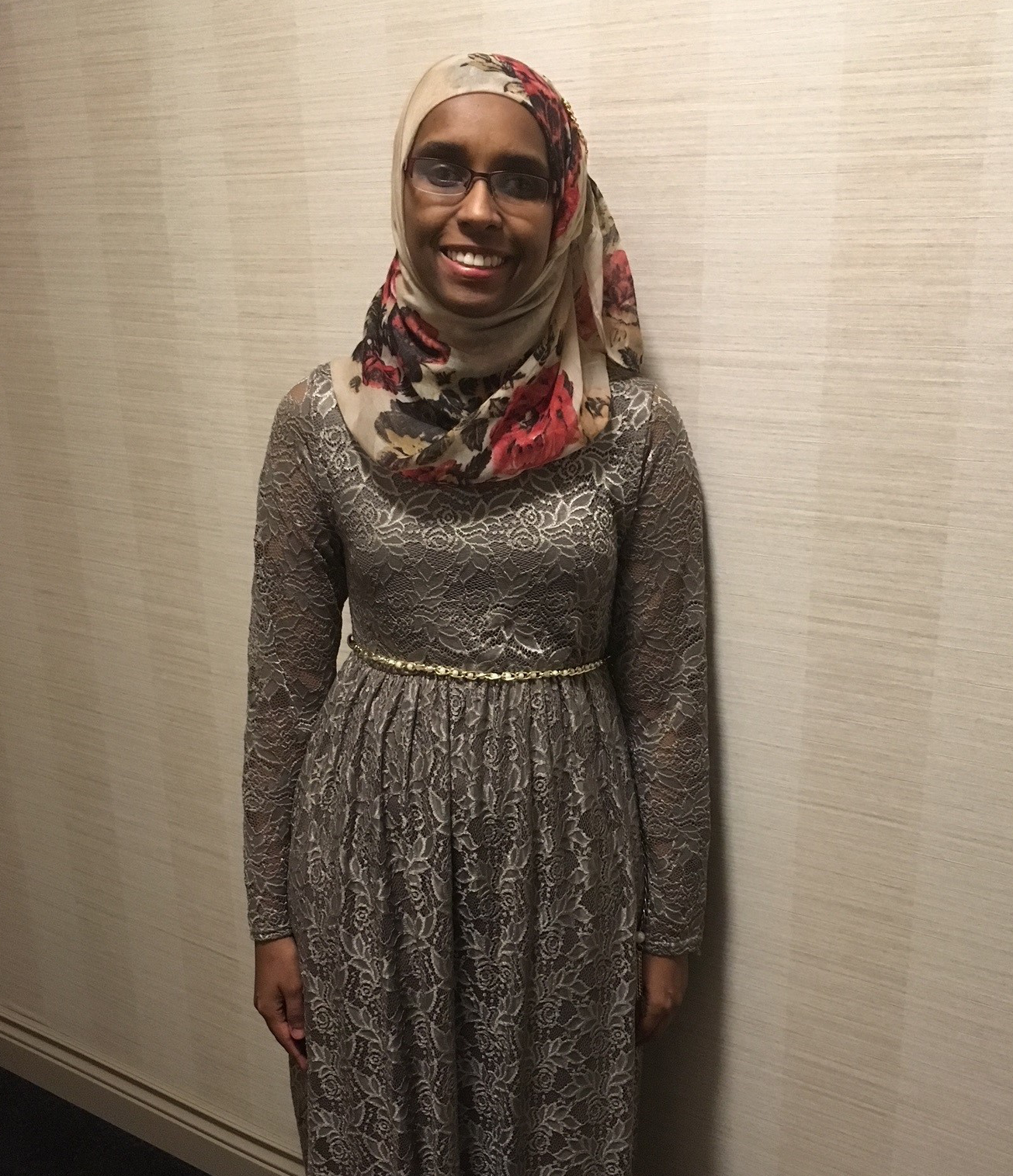Ramla was born in Somalia with Leber Congenital Amaurosis, which causes severe sight loss at an early age. She immigrated to Canada during the 1990’s and started school in grade 8 where she learned how to use a white cane. Ramla tells us more about some of the stigma she has faced as a white cane user, and how she has advocated for her independence over the years.

What are some cultural differences between Somalia and Canada towards your white cane?
There were no white canes in Somalia when I was there. Growing up, there were no schools for people with disabilities. I stayed home and if I went out, I was with someone else. There wasn’t much independence in terms of a blind person being able to do their own thing. In Canada there are a lot of cultural barriers when it comes to sight loss and the white cane, and I think that education and awareness is important. There are a lot of resources for people with sight loss but not everyone speaks English or French.
What made you decide to use a white cane and how did you learn to use it?
When I came to Canada, I was very resistant to the idea of using a cane. I didn’t see why it was necessary because I had lived without using a cane for so long. My family and my mobility instructor encouraged me to use a cane, but it took me years to accept that I needed to. Eventually, I wanted the independence to go out with my friends, and travel around on my own. I needed to use my cane to do that. I learned how to use my cane with the help of a mobility instructor through the Toronto District School Board. They taught me how to navigate safely around my school and other areas I wanted to learn.
What does your average day using a white cane look like?
Every time I go out, I use it. It helps me accomplish the things I need to accomplish. It’s very useful for crossing streets safely and navigating sidewalks. It is essential for getting around any unfamiliar environment.
What are some examples of when someone hasn’t understood what your cane meant?
People want to help but they don’t really ask if I need it. They grab hold of my cane from the bottom and try to guide me that way, which isn’t safe. I try to tell them not to, but they don’t listen sometimes. My cane is like my eyes and if someone is holding it then I don’t get the information I need from it. In that situation I just stop and tell them it is not safe for me. I try to educate the person who is trying to help me because I know they mean well.
What are some stigmas you face as a white cane user?
People have told me that I am faking my blindness because if I was actually blind then I wouldn’t I know where I am going. People assume I can’t do things for myself; I have been asked questions like “Who dresses you?” or “How do you go to university if you’re blind?”. That is a huge stigma, I can do everything a sighted person can do but people assume I can’t, and they don’t believe me when I tell them I can. It makes me feel excluded from society.
What motivates you to raise awareness for the white cane?
There are a lot of people with sight loss, so it is important that people understand what the white cane is for and how it helps people. Everybody’s confidence levels are different when it comes to using a white cane and we all have different skills. Having people understand those differences, as well as the importance of a cane and what it does is vital. Some people don’t know what a cane is for and believe that a guide dog is better than a cane. I want people to know that you can have the same independence by using a white cane as you can have when using a guide dog.